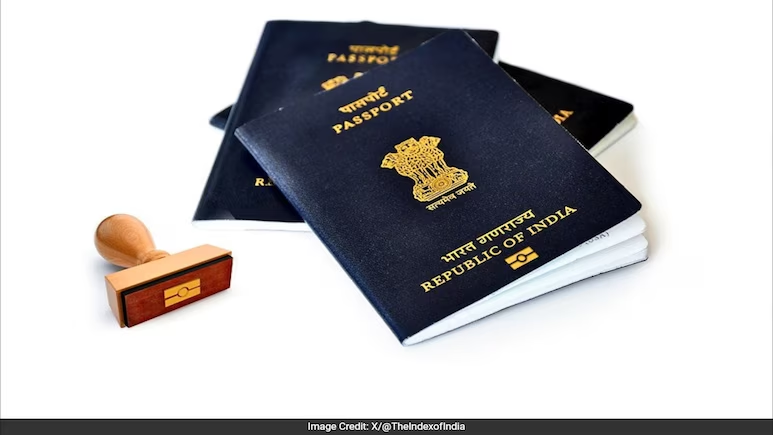What is E Passport? | Limitations and its pros and cons

In the emerging digital world, traveling documents are undergoing a revolutionary transformation. Among the most prominent developments is the introduction of e-passports, a smarter, more secure, and more efficient version of traditional passports. India, as in other parts of the world, is going ahead with the introduction of e-passports for Indians, a major step towards trouble-free international travel.

What Is an E-Passport?
A biometric passport, or an e-passport, is a normal passport with an electronic microchip embedded within. The chip holds the holder’s biometric data—fingerprint, face recognition, and digital image—as well as vital personal data like name, passport number, and nationality.
The chip is compatible with the International Civil Aviation Organization (ICAO) standards, in that its usage does not create any issues when crossing borders. It also possesses a digital signature to verify the details contained within, which renders the e-passport secure compared to its conventional equivalent.
India’s Transition to E-Passports
India launched its e-passport era by introducing them to diplomats and officials on a pilot scale. Encouraged by its success, the government proceeded to roll out this project to citizens in general. The Ministry of External Affairs is leading this launch alongside the National Informatics Centre and India Security Press, Nashik, which will be producing these new passports.
By making this move, India joins over 100 countries worldwide that have already adopted e-passports, and it is a step in the right direction toward modernizing border control and facilitating safer global travel for its citizens.
How E-Passports Work
An e-passport works exactly the same way as a regular one except with added technological support. When entering immigration borders:
1. The passport is put on an electronic reader.
2. The embedded chip transmits biometric and personal data to the reader.
3. The data is matched with the actual-time biometric scan (fingerprintor face scan).
4. Upon verification, the traveler is allowed to pass.
This electronic verification process is faster, more secure, and less susceptible to fraud.
Benefits of E-Passports
Increased Security
E-passports significantly reduce chances of forgery or copying. The implanted chip is encrypted and very difficult to forge. The biometric component offers extra authentication that is unique to the person.
Faster Immigration
Most global airports now have self-service e-gates that allow e-passport holders to zip past immigration. It saves time for the authorities as well as the traveller.
Global Acceptance
As electronic travel documents expand to more countries, e-passports are kept compatible with international systems. The people of India will have fewer hassles, with faster identification at various international entry points.
Tamper-Proof Technology
Tampering with the data on the chip will be immediately detected by the system’s security features. This averts identity theft and other passport-based crimes.
Convenience and Efficiency
E-passports make the entire check-in and boarding experience in airports easier and are readable with next-generation technologies to enable entirely **contactless travel**.
Limitations to Keep in Mind
While e-passports bring many improvements, there are a few points worth remembering:
Infrastructure Availability
The full potential of e-passports can be utilized only where scanning and verification systems exist. While most major airports do, some remote locations may still function manually.
Physical Handling
The internal chip is fragile. It will not work if it is damaged while bending or from magnetic field exposure, which may delay travel processes.
Awareness and Usage
New travelers may need training on how to use E-passports effectively during immigration and security checks. The learning process is minimal.
India’s Vision for the Future
The adoption of the e-passport shows India’s bigger picture of leveraging digital technologies for improved citizens’ services. It complements other hit initiatives like Aadhaar, DigiLocker, and UPI, all aimed at providing quicker, more secure, and smarter solutions.
The adoption of e-passports in day-to-day travel is not only about convenience but also about preparing Indian citizens for global mobility with cutting-edge tools that are on par with international standards.
What to Expect as a Traveler?
As e-passports gain popularity in India, applicants for passports and renewal of documents will start receiving new biometric-enabled ones. Here are what travelers can look forward to:
- Reduced wait times in immigration
- Enhanced security of personal information
- A document of identification acceptable worldwide
- A paperless, hassle-free airport experience
- The change will also boost the image and honour of Indian passports worldwide, creating trust in their safety and authenticity.
The E-passport is not merely a technological advance—it’s a step in the direction of rapid, secure, and smart travel. Now that India has also joined other nations to avail itself of this technology, citizens stand to benefit richly from its advantages. Whether it is the added security, the saved border time, or the convenient access to digital databases from all around the world, E-passports are bringing about an era of change in the manner we travel.
In a world where mobility is imperative and efficiency is the way of life, E-passports put India on the global map as a forward-looking, technology-driven nation eager to adopt the future of global travel.



